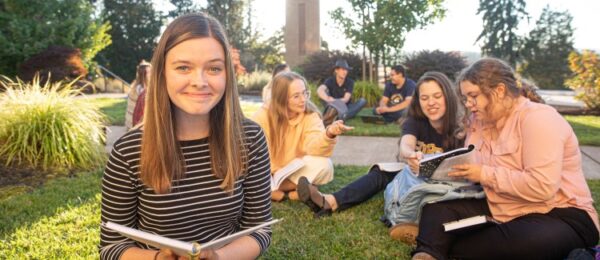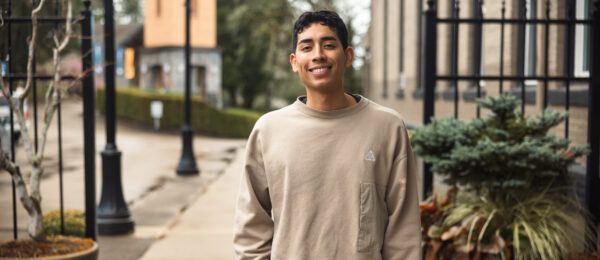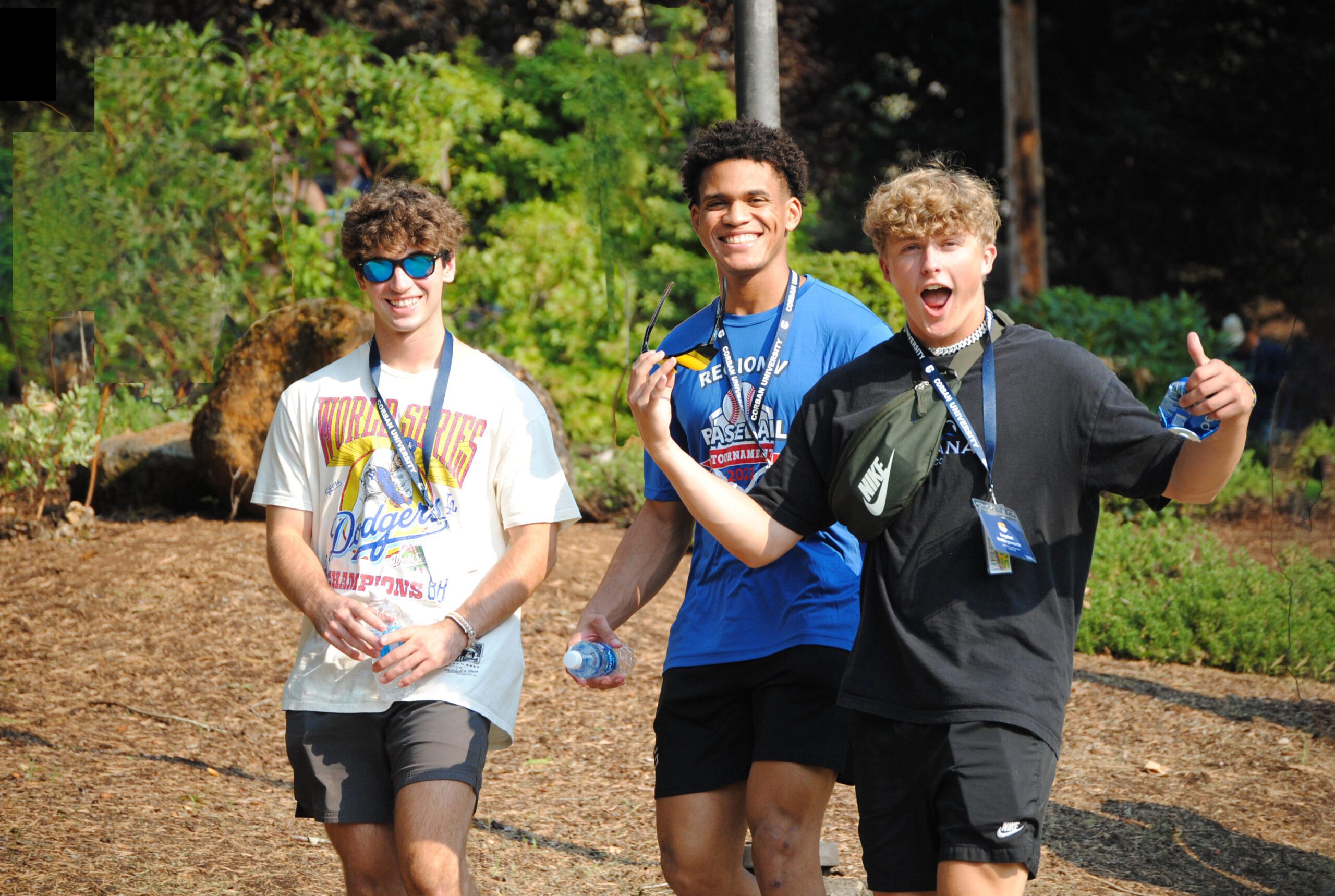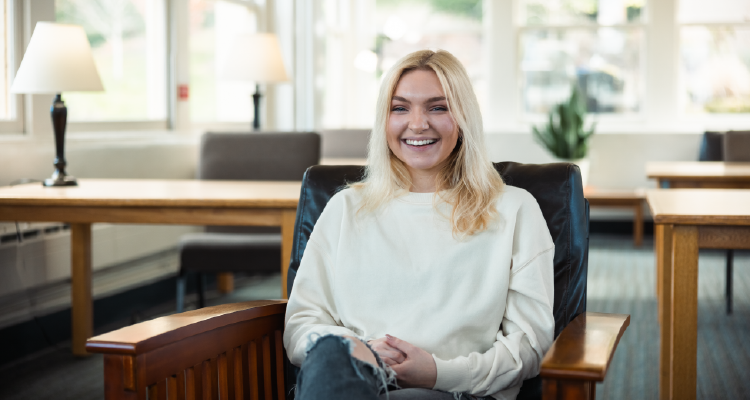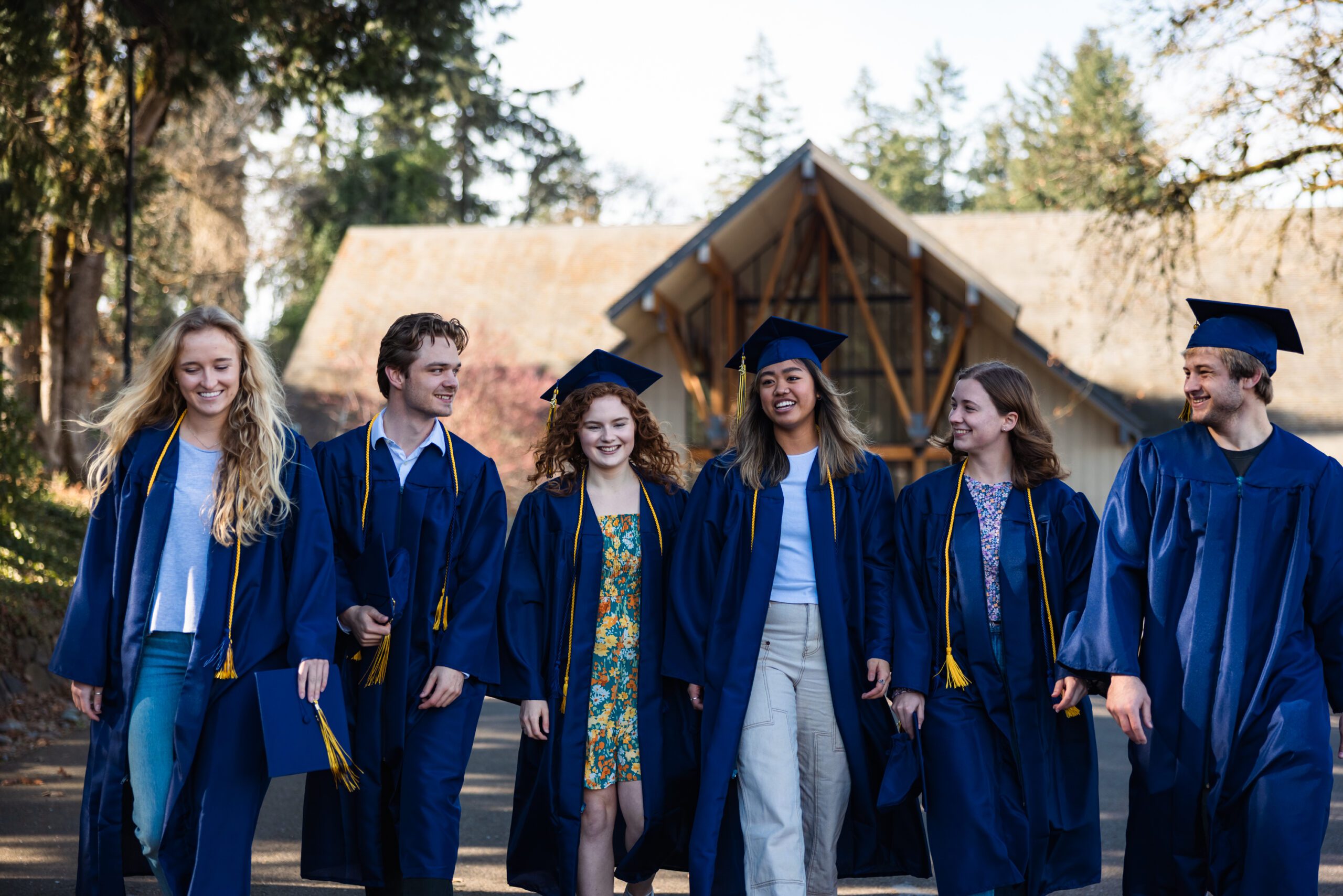10 Years After Beginning “Alice,” Rachel Ost Brings the Show to Corban’s Stage
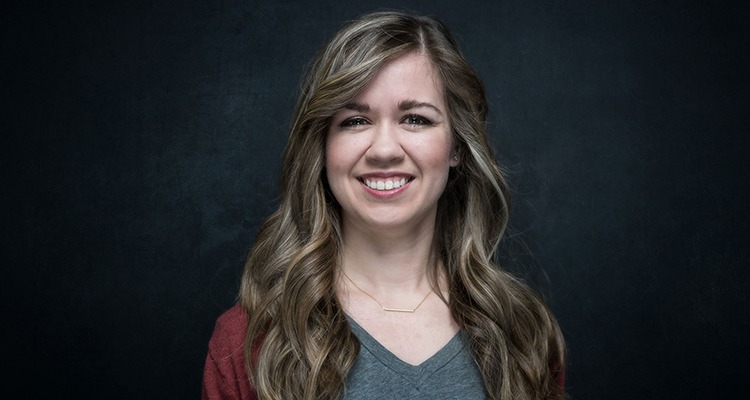
“Now, here, you see, it takes all the running you can do, to keep in the same place. If you want to get somewhere else, you must run at least twice as fast as that!” –The Red Queen in “Through the Looking Glass”
“Truly, I do not like the book Alice in Wonderland.” Coming from Corban alumna Rachel Ost, the statement is a bit surprising. After all, Alice in Wonderland was the inspiration behind her very first full-length show, Alice—the show she’s directing at Corban University this spring.
“I like the characters,” she clarifies, “but I’m not an absurdist. I don’t like the school of art that says art doesn’t need to make sense.” How, then, did a sensible person like Rachel end up writing and directing a show based almost solely on nonsensical characters?
Ten years earlier, that same sensible person sat in Gina Ochsner’s fiction writing class at Corban University. Gina gave the class a writing exercise: choose any two characters—fictional, nonfictional, completely made-up—and write several lines of dialogue between them. “I’d already been writing skits for the drama club on campus,” Rachel thought. “I’ve got this.”
She decided to write a conversation between Alice and the Mad Hatter. “Those are interesting characters. When they talk in the cartoon, it doesn’t make any sense—that’s why he’s called the Mad Hatter. But I wondered, what if the Mad Hatter did sort of make sense? And what if he wanted something from Alice?”
What began as a simple assignment in a writing class slowly evolved into a full-length show. The characters continued to fascinate Rachel after that day in Gina’s class: their rich history, their symbolism, the way they’d taken on shapes and meanings in the cultural consciousness. “My interest as a writer was, ‘Can I take these characters—who already have solid meanings, solid symbolism—and can I make my own story out of that?’” Off and on over the next decade, she continued to craft Alice.
“That probably wouldn’t have gone very far,” Rachel admits, had she been driven by creative impulse alone. But a series of events in her 20s kept leading Rachel back to the drawing board. “I started to learn a lot more about my family history—specifically my mom’s.” As she uncovered more of the legacy of her mother and grandmother (whose name, incidentally, was Alice), she began to learn what every young person dreads learning: the people whose lives you thought were perfect, weren’t.
“I lost my self-deceptions,” Rachel says. “When you’re a little child, your grandparents are perfect (as they should be). They’re the ones giving you gifts and popping in and out at happy times. But as you grow into a woman, you start to lose the veil.”
Rachel learned that her grandmother’s life wasn’t easy, that she’d grown up in a system that didn’t always let women win. “I don’t think, as a young adult, the concept of ‘not winning’ was ever in my head.”These realizations, coming in that volatile time of life—one’s 20s—had to be documented. They had to be embodied, wrestled with. And so, Rachel wrote them into Alice.
“I once heard the advice, ‘Write like you’re God, and edit like you’re Genghis Khan,’” Rachel says. So that was what she did. She wrote freely, for release, for creative expression, for catharsis. And then she turned it over to her critics for vicious editing.
The first person to read Alice was Rachel’s roommate Joy. “It was really hard to get critiques out of her,” Rachel laughs. “She didn’t want to tell me what she thought was wrong.”Next, Rachel sent the script to her mom. “She called me in tears and said, ‘I see it. I see the story you wanted to tell.’” While it was gratifying to hear her mom’s praise, she still didn’t receive the critique needed to polish Alice.
Finally, she sent the draft to Tamara McGinnis, her former writing professor and the director of the Theatre Arts Department at Corban. “The red pen was flying,” Rachel says. “I went back and cut things I didn’t want to cut, added things I didn’t know needed to be added, simplified, streamlined.”One of the most difficult revisions surrounded the question of “The Game.”
“The primary conflict in the play is ‘The Game,’” Rachel explains. She recounts how, in the book, Alice plays cards, she plays chess, and—of course—she plays croquet. “In an absurdist book, those are the main conflicts: the queen’s games.” In Rachel’s play, she had originally written “The Game” as something obscure, often talked about but never presented onstage. “The characters talk about ‘The Game,’ but no one really gives you any details. It’s meant to be ominous and unknown.”
Rachel admits that part of the reason she never explained ‘The Game’ was because she had no idea what the game was. “I took the easy way out. I did all these little dances to get around it.”
Tammy called her out. “People want to see ‘The Game,’” she said.
“She was right,” Rachel admits. “The audience is going to expect to see it, they’re going to expect physical conflict. Something has to happen.”
After a play undergoes the transformation of editing, it’s transformed again when it’s performed. Characters that lived only on the page must be cast as real people who bring their own interpretations, their own nuances. “You almost feel desperate for people to see it the way you see it,” Rachel says, but she know that isn’t possible. “Art is subjective, and everyone is going to see it slightly differently.”
Soon after she’d selected her assistant directors (Corban alumni JP Partridge, Nathan Messmer, Meagan Gliebe, and Daniel Elkins), they sat down together for a read-through. For the first time, her show was brought to life. Rachel listened as her assistant directors pulled out the themes she had hoped they would see and even noticed things she hadn’t intended.
When asked what she’s most excited about directing Alice, Rachel says, “Having 12 actors.” In the last show she directed, Robin Hood, the cast numbered close to 40. With a cast that large, “so much of your time goes into practicalities.”
With a smaller cast, she’ll be able to devote time to character development. “With 12 actors, we can give them an opportunity to grow their craft in a direction we haven’t explored for a couple of years. We can give them character development exercises, we can give them hours to really think about their motivations and ‘whys.’”
Why is the Griffin dedicated to protecting and guiding Alice when it seems he has nothing to gain from it? What motivates the Queen of Hearts, and what does she really want? How does she justify her behavior? These are the kinds of questions Rachel’s cast will have time to wrestle with. And because Alice is not the traditional nonsensical, absurdist Alice in Wonderland, perhaps they will actually uncover the answers and unearth characters that, on some level, make sense.
“I’m also excited visually,” Rachel adds. “This play is going to be very expressive in color, it’s going to be expressive in costuming, the set’s going to be a lot of fun.” She laughs, “I’ve got a six-foot rose in the trunk of my car as we speak.”
While the bright colors and symbolic characters will be familiar to the audience, Rachel promises the story itself will not be. “This is not Lewis Carroll’s Alice in Wonderland. This is Rachel Ost’s Alice,” she states boldly. “They sprout out of the same soil, but they are different plants.” Don’t come in expecting an adaptation of the book or the movie, she warns. If you do, you’ll be disappointed.
What, then, can you expect?
Expect familiar characters in situations they have never been in before. Expect a story of self-discovery, a story of loss and victory, a story of choices. Expect to see a little bit of Rachel’s own journey through her 20s, a little bit of her grandmother’s story, a little bit of yourself.
Written by Amelia Kaspari, Staff Writer
